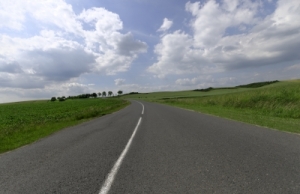Hay fever or seasonal allergic rhinitis affects millions of individuals all over the globe. The symptoms typically include stuffiness, sneezing, runny nose and itchiness in the roof of the mouth, nose, ears, eyes and throat. Take note these allergic reactions are typically triggered by outdoor allergens such as mold spores and pollen present in the air which instigate a chain reaction in the immune system.
Pollen
Pollen can be described as small-sized grains that fertilize various kinds of plants. Pollen from plants with colorful flowers does not usually trigger allergies. Take note that these plants depend on insects to transport the pollen for fertilization. On the other hand, various plants have flowers that produce powdery pollen that are easily spread by the wind. These are responsible for triggering the allergy symptoms.
Every plant has a period of pollination that varies each year. Nevertheless, the weather can affect the level of pollen present in the air. During the late spring and early summer, grass pollen often causes the symptoms. As for later summer and fall, hay fever is caused by weed pollen. In warm areas, pollination can occur all year round.
Mold
Mold is tiny fungi related to mushrooms but lacks roots, stems or leaves. As one of the common outdoor allergens, mold can thrive almost anywhere including plants, soil and rotting wood. The spores float in the air similar to pollen. The outdoor mold spores start to increase as the temperature increases in spring.

Level of pollen and mold
The pollen and mold counts measure the amount of allergens present in the air. The pollen count reflects the real-time conditions. The pollen and mold forecasts are based on the previous pollen data and general weather forecasts.
Effects of location and weather
The symptoms of hay fever are not prominent during cloudy, rainy or windless days since pollen does not move around during these conditions. The pollen tends to travel easily during hot, dry and windy weather which increases the allergy symptoms.
Some believe that relocating to a different area can reduce the symptoms. On the other hand, various types of pollen and mold common to most plant zones, thus relocating is not recommended.
Treatment
If the symptoms make the life of the individual miserable, an allergist should be consulted. The allergist can determine which allergens are responsible for triggering the symptoms. Based on the assessment, a personalized plan will be provided which include steps to avoid contact with potential allergens. The allergist will also prescribe medications for temporary relief.
In case the symptoms persist or continue to experience them for months or even years, the allergist might recommend immunotherapy (allergy shots). This treatment involves regular injections administered in gradually increasing doses. This works by making the immune system more resistant to the specific allergen and reduce the symptoms as well as the need for medications.
Considerations to bear in mind
There are also simple measures that must be considered to reduce exposure to the outdoor allergens such as pollen or mold that causes the symptoms.
- Always keep the windows closed at night and if possible, use an air conditioner.
- It is best to stay indoors when the count of mold or pollen are high. In case the symptoms are severe, use a pollen mask if prolonged exposure is unavoidable. When returning indoors, the individual should take a shower and change clothes.
- If possible, avoid mowing the lawn or raking leaves since these can stir up the mold and pollen.
- When travelling by car, always keep the windows closed.
